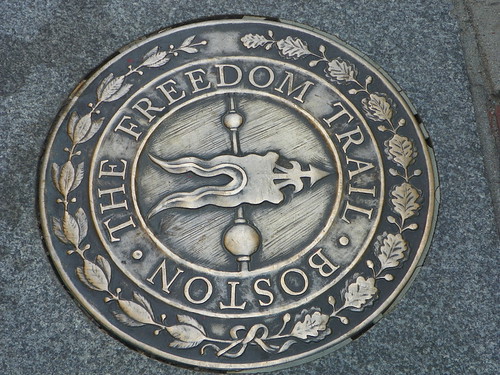
Another HOT day, full of walking, but it was worth it. Once I actually found the Visitor's Center (relocated due to construction) and procured a map I was on my way...sort of. I knew the Freedom Trail was marked by a red line (mostly red brick) but occasionally just red paint. Normally you come out of the VC right to the beginning of the trail. Instead, as I walked back across the street to Boston Common and whole sidewalk was alternating red brick squares. As I was walking past the corner I notice red paint, but assumed it was part of the construction. I was almost ready to cross the street when I heard a kind-hearted citizen telling other tourists, "This line right here, just follow it and it will take you everywhere on the trail." So, I was on my way.
Boston Common
The Boston Common is America's oldest public park and was originally used as common grazing land for cattle. The Common has also been the site of hangings, duels and celebrations.
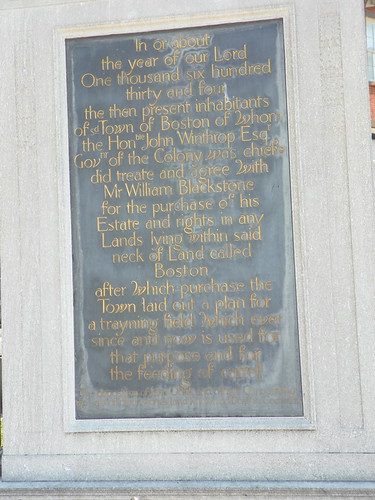
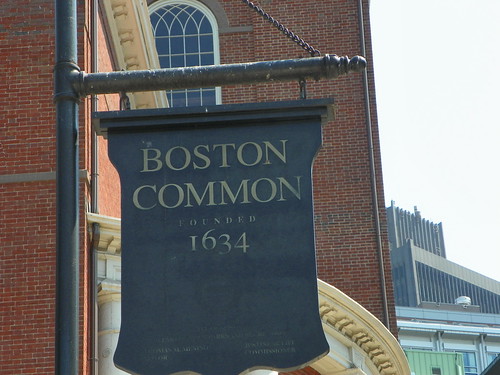
Massachusetts State House
The State House was completed in 1798, at five times the budget. John Hancock was the original owner of the land on Beacon Hill.

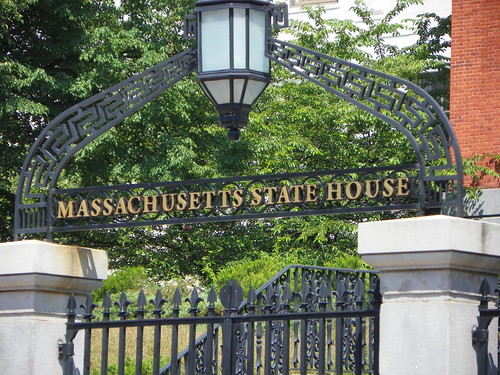

This guy was protesting out front. I have no idea what he was talking about, but good for him.
Park Street Church
Built in 1809 the 217-foot white steeple was the first landmark a traveler saw approaching Boston. The Park Street Church was also known as Brimstone Corner for the fiery sermons and the gunpowder stored in the crypt during the War of 1812. On July 4, 1829 William Lloyd Garrison gave his first public anti-slavery address here and 2 years later My Country 'Tis of Thee was first sung on the church steps.
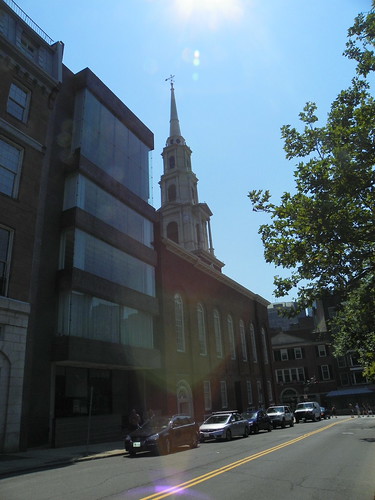
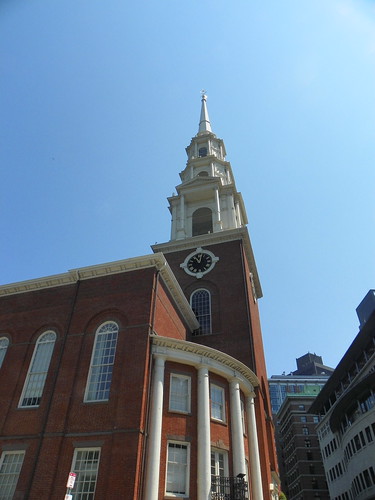
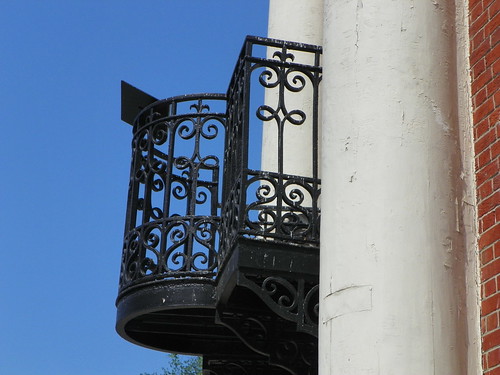
Granary Burying Ground
Park Street Church used to be a granary thus the name of the burial ground next door. This is the 3rd oldest burial ground in Boston and the final resting place of many Bostonians including: John Hancock, Samuel Adams, Paul Revere, Peter Faneuil and all 5 victims of the Boston Massacre.
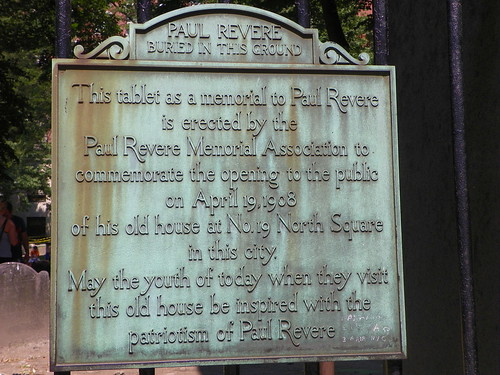
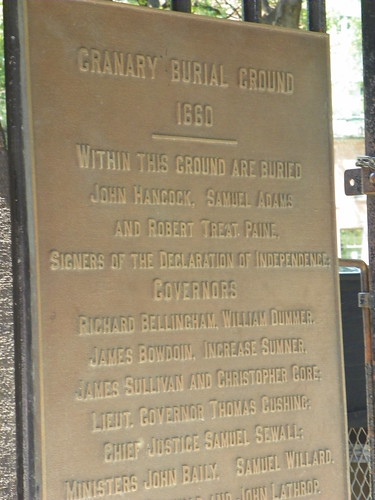
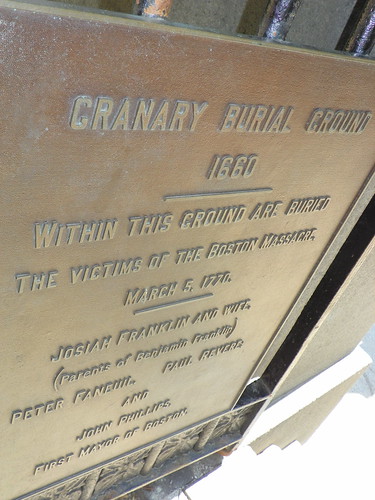
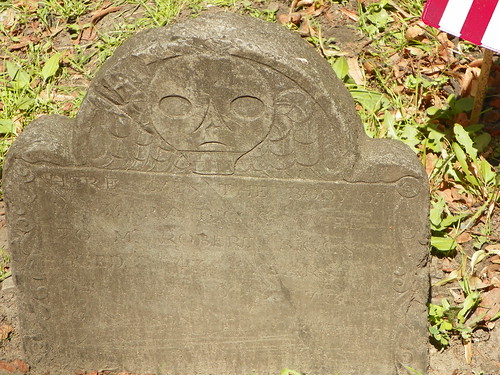

King's Chapel
King James II ordered the land here seized to build an Anglican church here in 1688. By 1749 the church was too small and a new Georgian chapel was constructed around the original. Adjacent to King's Chapel is Boston's first burying ground, final resting place to Mary Chilton, the first woman to step off the Mayflower.

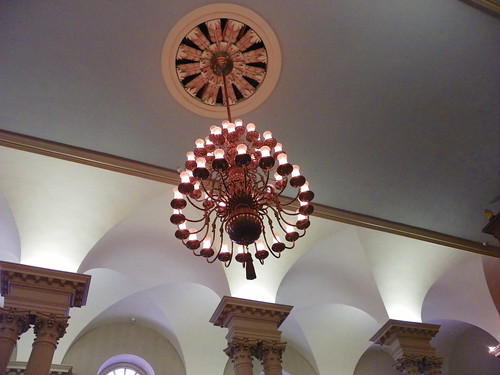
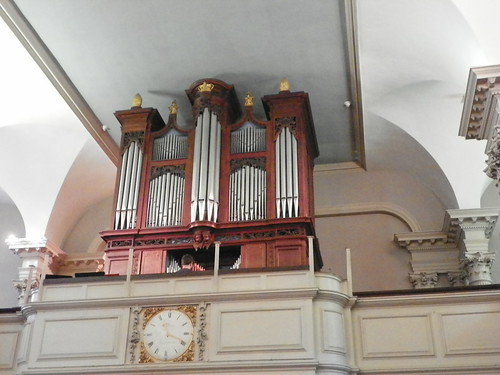
There was actually a guy playing the organ while I was there.
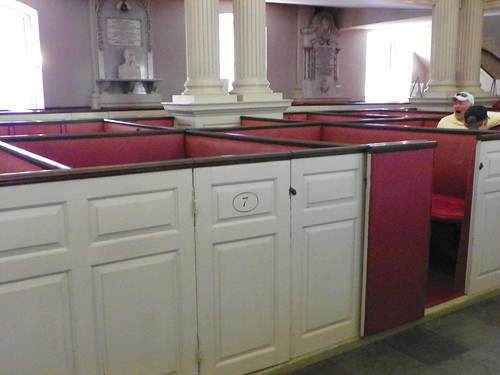
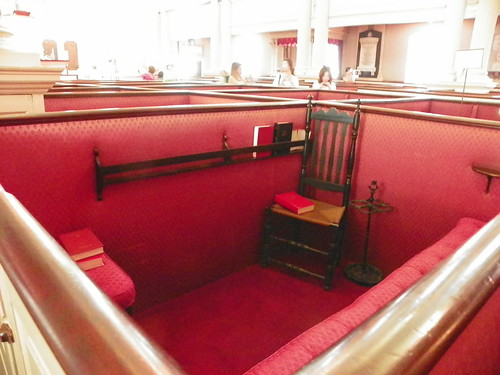
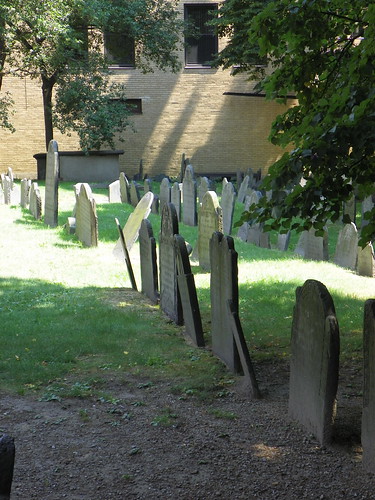
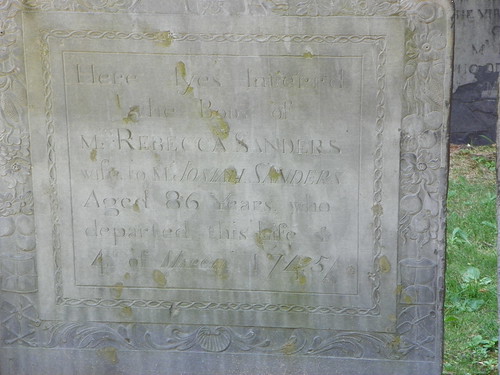
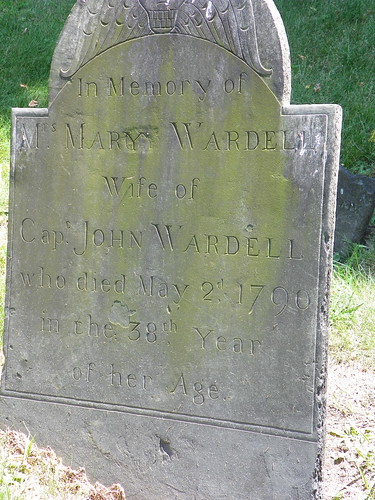
First Public School/Statue of Benjamin Franklin
Embedded in the sidewalk in front of Old City Hall is the mosaic City Carpet, which commemorates the site of the first public school in the U.S. Among the school's alumni: Ben Franklin, John Hancock, Samuel Adams, Charles Bulfinch and Ralph Waldo Emerson.
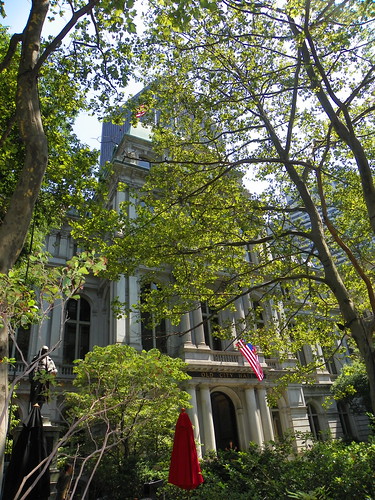
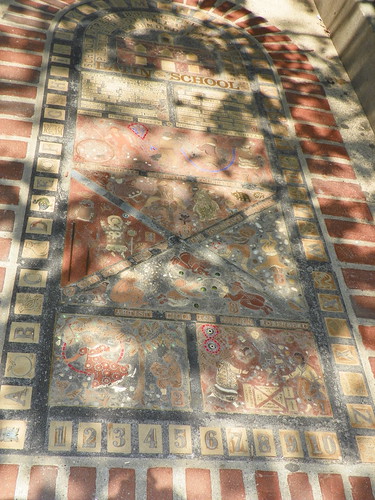
Richard Greenough's statue of Ben Franklin stands in front of Old City Hall. The sculptor said that he found the "left side of the great man's face philosophical and reflective and the right side, funny and smiling."
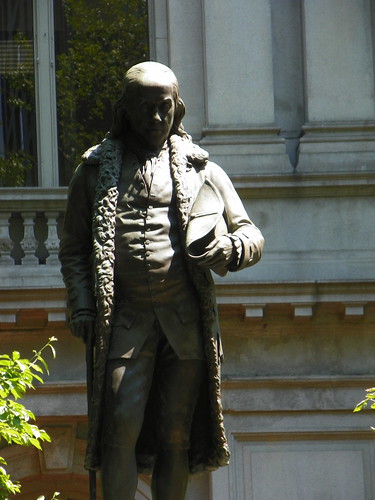
Old Corner Bookstore
Ironically, the Old Corner Bookstore is still surrounded by all manner of bookshops, big (Borders, B&N), and small, locally owned, rare and old books.
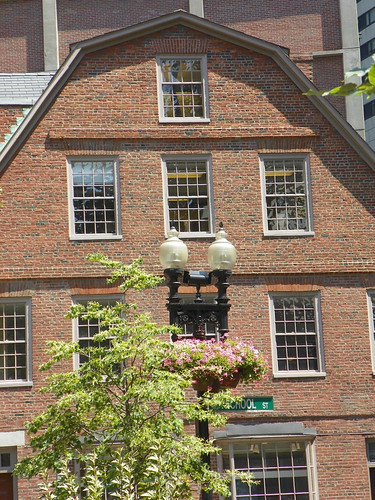
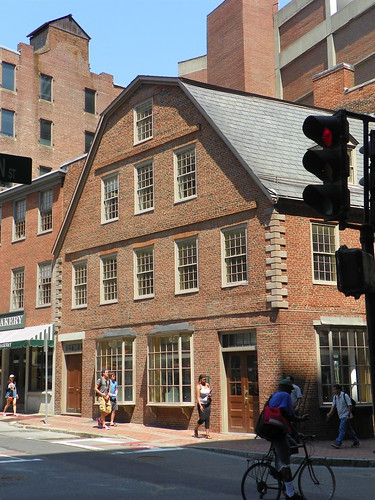
Old South Meeting House
Built in 1729, this is the 2nd oldest church in Boston. Old South was used for public meetings when the angry crowd outgrew Fanueil Hall. Many of the crucial events leading up the Revolution took place here. The most famous is the meeting held on December 16, 1773, when over 5000 gathered to protest the tax on tea.
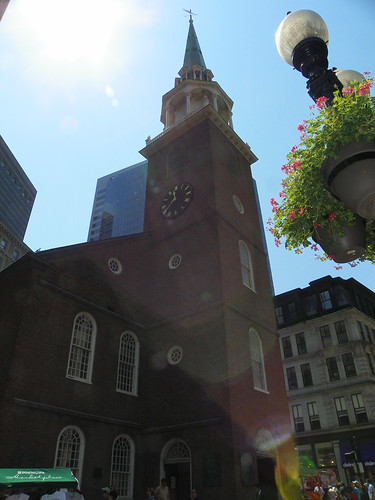
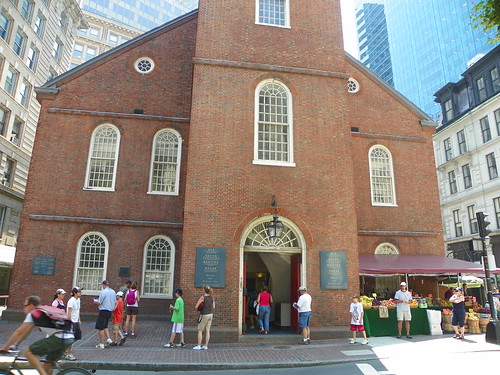
Old State House/Boston Massacre
The Old State House is Boston's oldest surviving public building (1713). It was the center of political and commercial life, and housed the merchant's exchange. The Old State House played a central role in the rebellion as it was the site of such events as the Boston Massacre (1770), James Otis' Writs of Assistance speech (1761), and the reading of the Declaration of Independence from the east balcony in July of 1776.

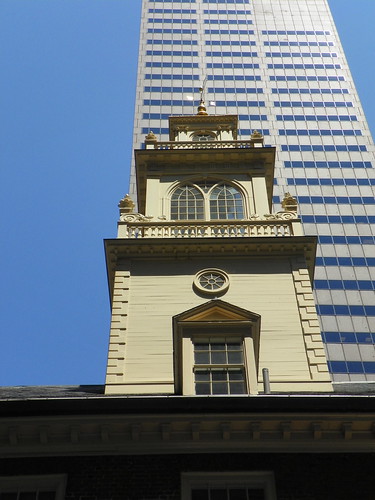
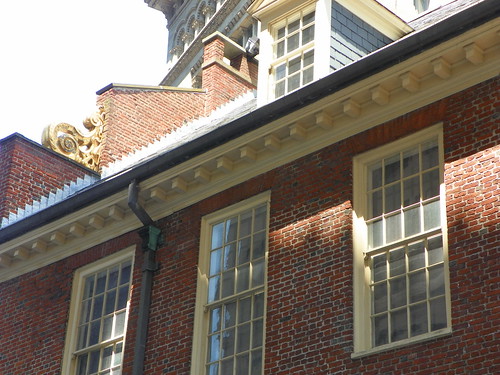

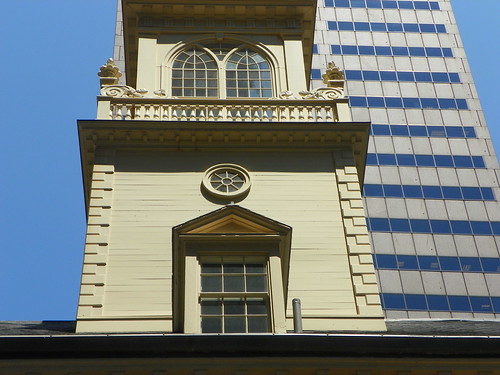
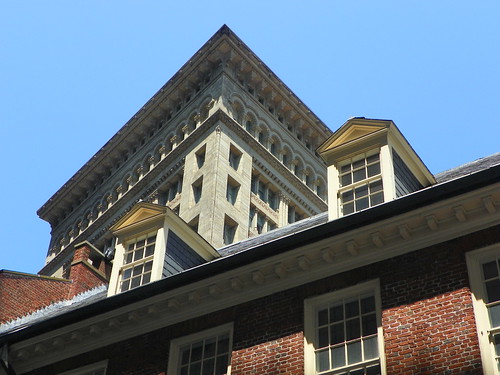
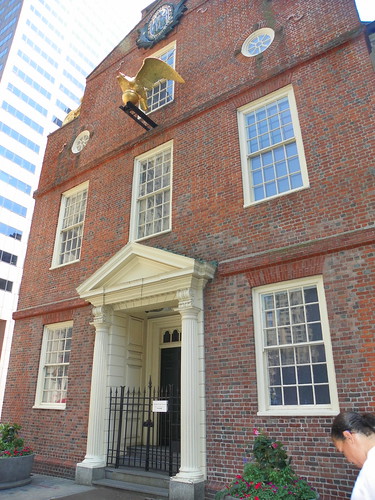
Below the balcony five men where killed in what is known as the Boston Massacre. This clash between Colonists and British troops claimed the life of Crispus Attucks, the first black American to die for the patriot cause. John Adams and Josiah Quincy, loyal to the patriot cause, but also loyal to justice, defended the British soldiers. All but two were acquitted, they had their thumbs branded and were set free.

Fanueil Hall
A gift from wealthy merchant Peter Fanueil in 1742, Fanueil Hall served as a meeting place and an open-air market. It was here that Bostonians began their opposition to British authority. Here citizens rallied against the Sugar Act, the Stamp Act, the Townsend Act, and impassioned speeches were made by patriot such as Samuel Adams and John Otis. After the revolution people continued to gather for anti-slavery speeches, women's rights rallies and every war since the War of 1812 has been debated here.
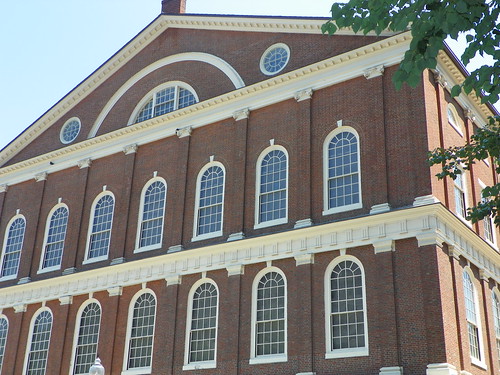
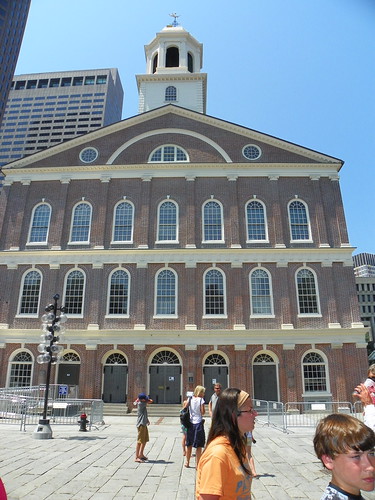
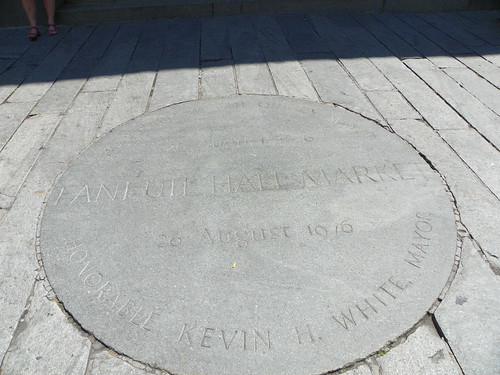
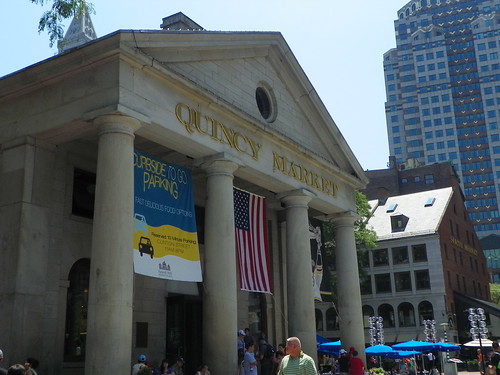
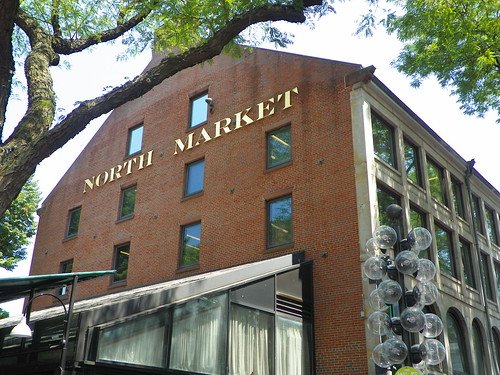
Up to this point on the Freedom Trial everything is really bunched together. You're seeing something on the list not more than a block or so apart. Some are within steps of each other. That combined with the heat and humidity of the day made the trek to these last 2 destinations seems miles long. Really, it's not that far, but I was wiped by the time I made it to Old North Church.
Paul Revere House
This house is Boston's oldest, private building downtown. It was from here that Paul Revere set out on his famous "midnight ride". Paul Revere was not only a patriot, but a skilled silversmith, copper manufacturer, part-time dentist, engraver and father of 16 children.

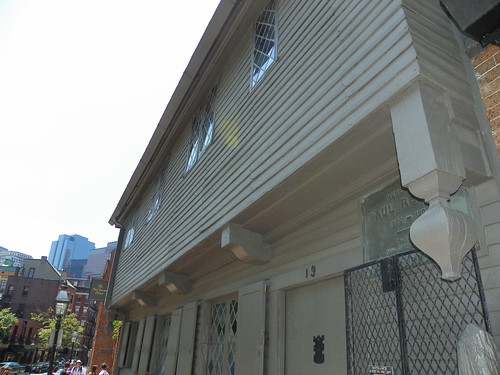
Old North Church
It was from this steeple that two lanterns were hung on April 18, 1775 to signal the beginning of Paul Revere's legendary ride.
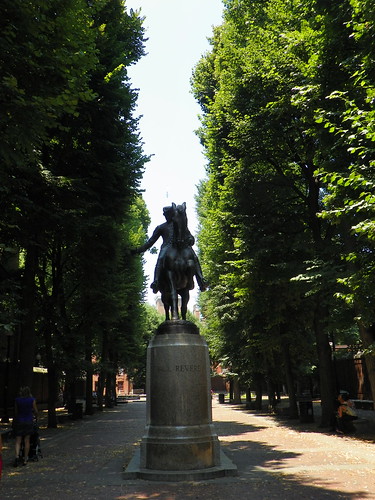

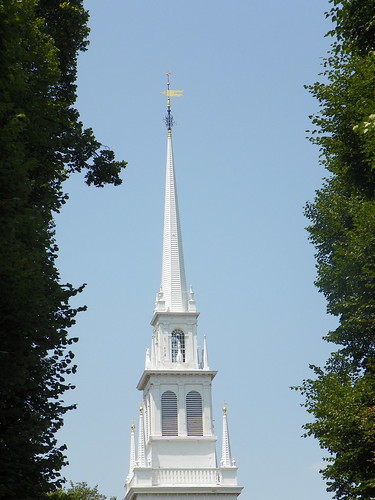

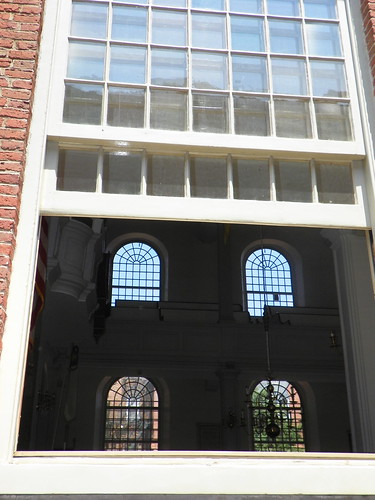
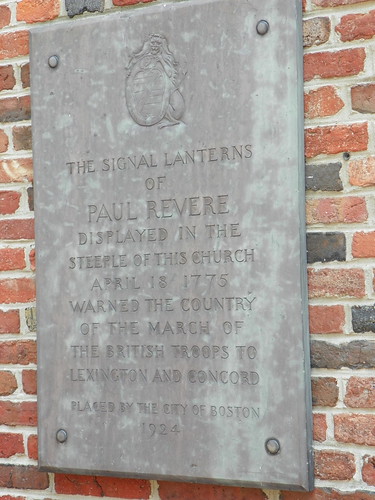
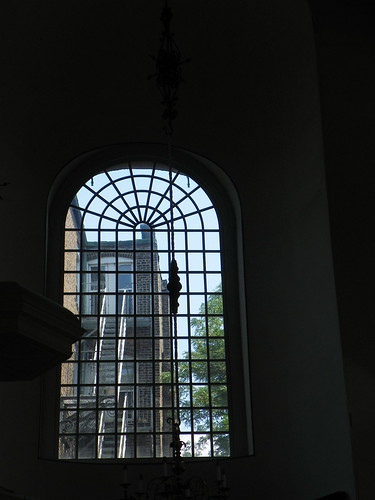
There are 3 more stops on the Freedom Trail: Copp's Hill Burying Ground, USS Constitution - Old Ironsides, and Bunker Hill Monument. These stops are located across the river and T3 had suggested that I drive to them instead of walking across the river, but by the time I got back to my car I was too hot and tired to even consider having to drive across the city, find new parking, and walk around some more. So, I'll have to go back someday to see the stops, and to go inside the Paul Revere house. I was also planning to cross Legal Sea Foods off my list, by stopping there after the Freedom Trial for some Boston Cream Pie, but again, see: hot, tired, parking.
I did, during my trek across Boston, take a couple of breaks to sit and catch my breath, and struck up conversations with locals. The accent is both fascinating and a little comical, I think. One guy actually asked me if I'd been to see Hah-vahd Yahd, yet. I also shared a park bench on the Common with a lady while she ate her lunch. We were talking about my recent visit to Martha's Vineyard and we were a good five minutes into the conversation before I figured out that she was saying yachts.